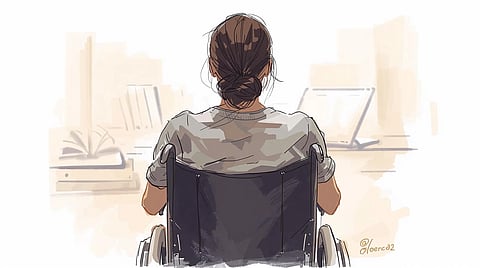Kalpana enrolled in the AMIE (Associate Member of the Institution of Engineers) program in Computer Science, offered by the Institution of Engineers (India), Kolkata. This program is recognized by the Government of India as equivalent to a Bachelor’s degree in Engineering.^1 Distance education gave her hope that she could continue learning without the emotional and physical toll of being carried from class to class. But even here, accessibility remained a battle.
Examination centres in Shimla were often located far from the main road, with over 100 steep steps leading up to them. Each time, her father carried her on his back. “The stairs were so steep that it was terrifying, and everyone stared at us. I felt small, like I should not even be there,” she said. “I even thought about giving up the exams altogether.”
She repeatedly requested authorities to conduct exams on the ground floor, but nothing changed. What should have been a three-year degree stretched into almost ten. Not because she lacked ability, but because the system was not designed for students like her.
Her perseverance paid off when she finally completed her degree. But when she applied to SJVN, she discovered that her correspondence qualification was not considered valid under the “regular degree” clause. She wrote to the company in May 2025, explaining her situation, but never received a response.
She applied for the recruitment test anyway. Like all candidates, she automatically received an admit card but was allotted Mohali as her examination centre instead of her first preference, Solan. When she contacted the helpline to ask about both the clause and the centre, staff could not provide answers and told her to raise a ticket online. She did so, but the ticket was closed without resolution. On August 12, 2025, two days before the test, she mailed a letter to SJVN requesting reconsideration and exam centre assistance. As of publication, SJVN has not publicly responded to her appeal or issued any clarification about exceptions for persons with disabilities holding correspondence degrees.


